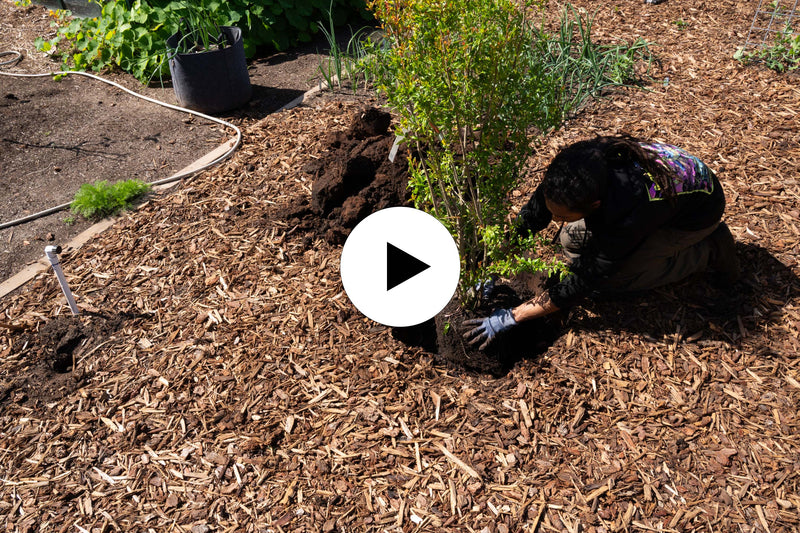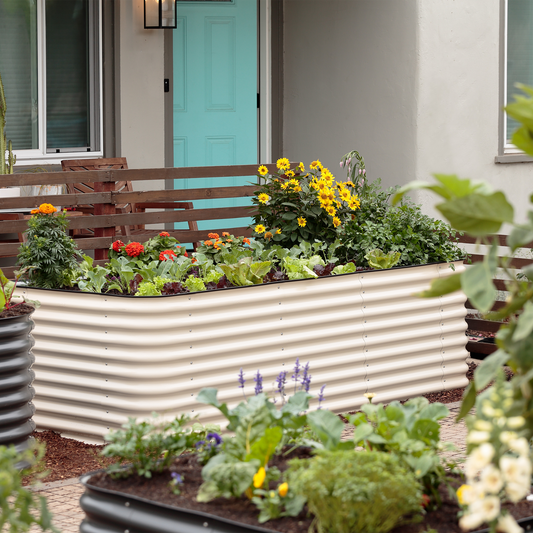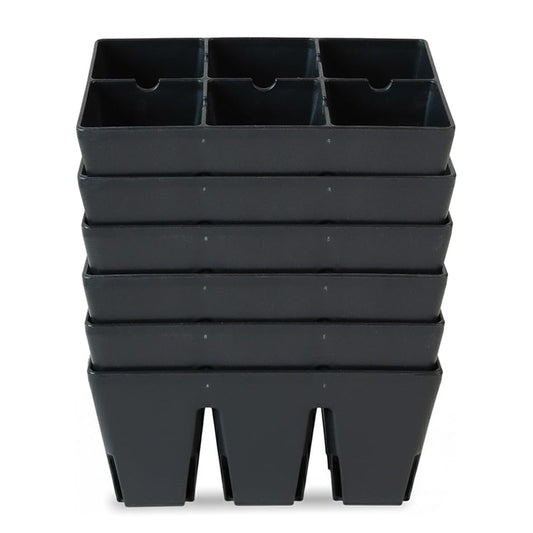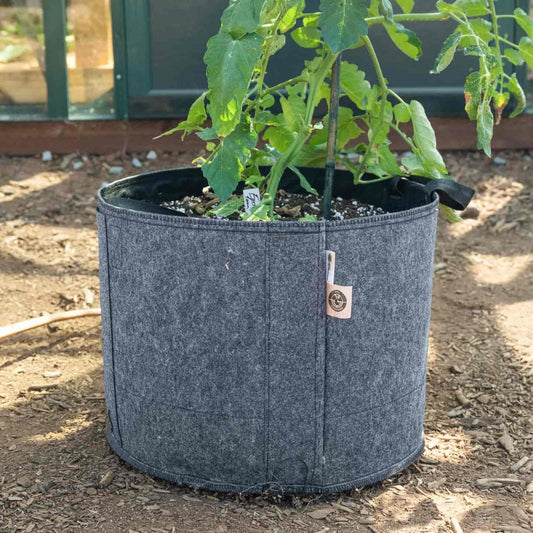


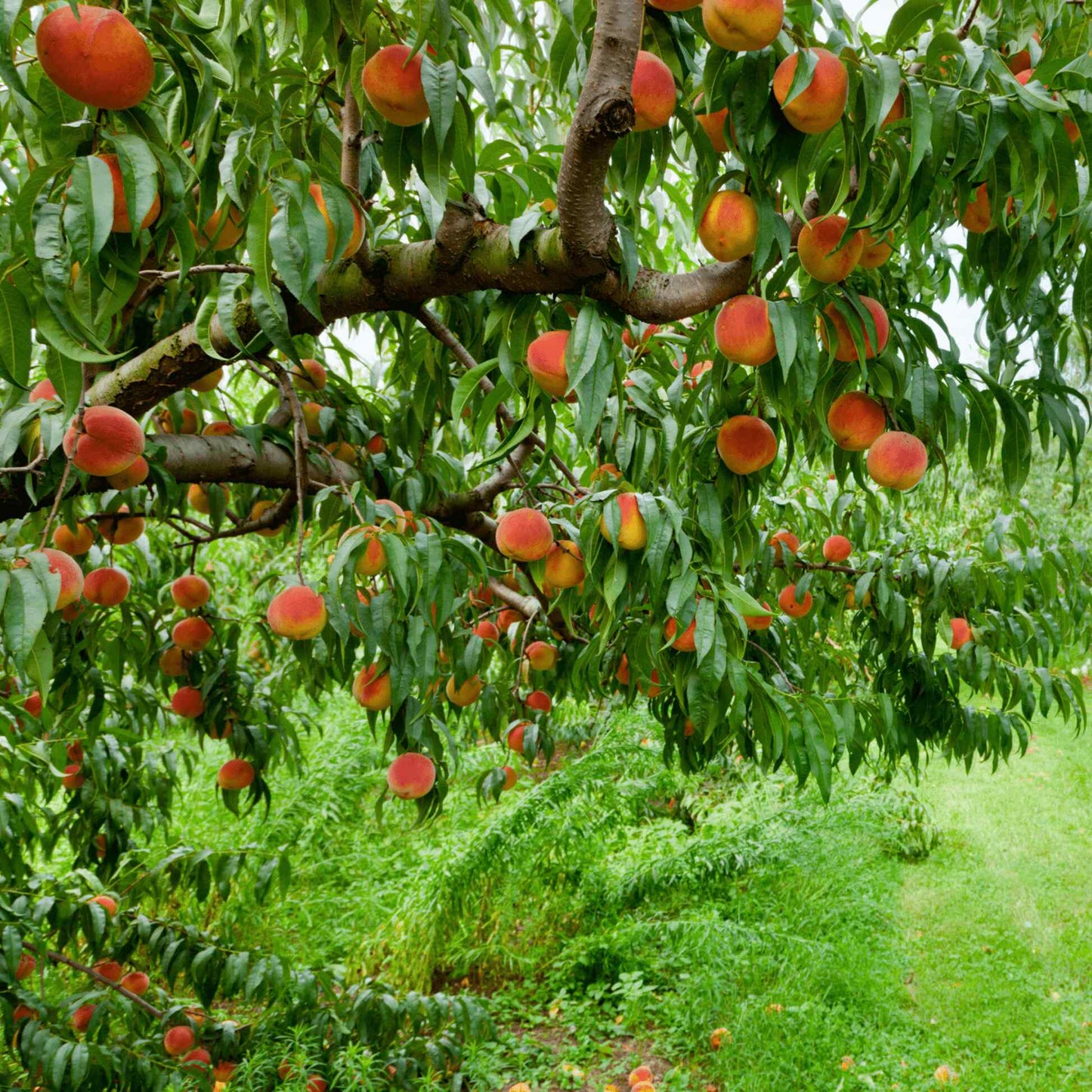
Elberta Peach Tree
View More Planting Info
Elberta peach trees grow best in USDA zones 5-8, with a width of 10 ft and a height of up to 15 ft. Give it at least as much space as its max height. Find a position with at least 6-8 hours of sunlight a day and is protected from winds. Dig a hole twice the height and width of the root ball. Set the tree in the hole, spreading out the roots. Backfill with soil, ensuring the graft union is above soil level. Press the soil down firmly to remove air pockets and water well. Add a layer of mulch to preserve moisture in the soil, ensuring it’s not touching the tree stem.
Location:
Choose a place in full sun with slightly acidic and well-draining soil.
Watering:
Make sure to water peach trees well when it's not raining. They like lots of water twice a week.
Harvesting:
This variety produces large peaches that are perfect for eating fresh or baking. Make sure they are ripe and flushed with red all over before harvesting – taste test one before harvesting more.
- Product Info
- Care and Maintenance
- Planting Care
- Growing Zone
Product Info
Mature Height: 15 ft.
Mature Width: 10 ft.
Sunlight: Full Sun
Growth Rate: Fast
Does Not Ship To: AR, AZ, CA, ID, LA, OR, WA
Care and Maintenance
Watering: Peach trees like to be kept well-watered and the soil moist but not waterlogged. Water at least twice a week while the tree is becoming established, especially in hot and dry weather.
Fertilizing: Six weeks after planting, begin fertilizing with a balanced formula, making sure to use the manufacturer’s instructions. In spring, fertilize again just before the new growth appears. Repeat again in summer and in the fall. Apply around the drip line of the tree to ensure the nutrients reach the roots.
Pruning: In the first two years, Elberta peaches need proper pruning to keep them tidy and remove any damaged or crossed branches. After that, prune for more fruit production. Thin out branches, keeping the strongest, and making an open shape in the center to encourage light to penetrate the middle of the tree.
Pests and Diseases: Although considered pest and disease-resistant, watch out for minor pests like aphids and scale. Over or underwatering may cause leaf discoloration.
Pollination: Elberta peach is self-fertile. However, it is best to plant in pairs to get bigger and better fruit.
Harvesting: Peaches on the outside of the tree will be ready to harvest first by giving them a gentle twist. Only pick fully ripened peaches with no hint of green left on the skin.
Recovery Time: Transitioning from our nursery to your home can be a bit of a shock to your plant. A short acclimation period helps it recover and reduces stress.
Climate Adjustment: Every environment is unique. Giving your plant time to adjust to the local climate, humidity, and light conditions in a shady spot will set it up for better growth and health.
How to Acclimate Your Plant: Keep the plant in its container and place it in a shady, sheltered area away from high winds. Ensure it's watered adequately – the soil should be moist but not waterlogged. Monitor the plant for any signs of distress and allow it to adjust for a few days before planting. After a few days of acclimation, your plant will be better prepared to thrive in its new home for years to come.
Planting Care
Location: Choose a place in full sun with slightly acidic and well-draining soil.
Watering: Make sure to water peach trees well when it's not raining. They like lots of water twice a week
Harvesting: This variety produces large peaches that are perfect for eating fresh or baking. Make sure they are ripe and flushed with red all over before harvesting – taste test one before harvesting more.
Growing Zone
Growing Zone 5-8
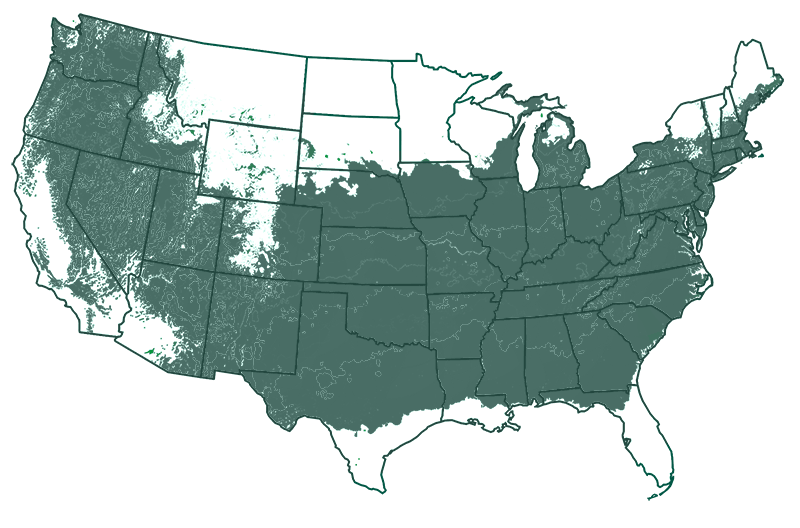
Fruit Trees & Bushes Delivered to Your Doorstep
Unpack, Plant and Grow!
